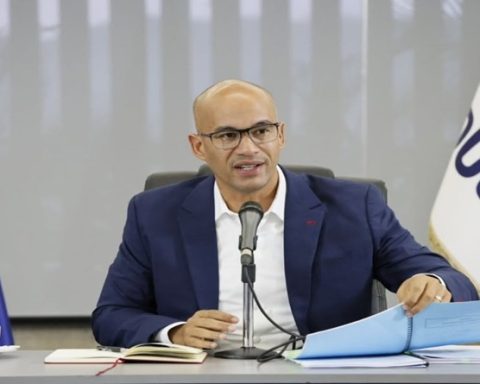Each May 30 marks the World Day of multiple sclerosisa neurological, chronic and degenerative disease that can cause disability.
With the aim of raising awareness, several monuments and buildings in the National District have been illuminated since this Saturday with the color orange in order to raise awareness about the disease that affects millions of people around the world.
During a tour of Free Journal It was observed that the Santo Domingo Town Hall, the Monument to Fray Antonio de Montesinos and the Center of Heroes monument (La Bolita del Mundo), look orange.
The group Free Journal also joined the fight and illuminated their facilities.
This Monday May 30 The multiple sclerosis awareness monologue “You forgot a detail” will be presented with theatrical direction by Lorena Oliva and the participation of Dr. Deyanira Ramírez and Dr. Comme Debroth. The event will be held in the Sinfonía room of Banco López de Haro on Sarasota Avenue at 7:00 pm.
The “World Day of Multiple sclerosis” (EM) commemorates the global solidarity and hope for the future that people with this disease have. It was created by the International Federation of MS.
This disease is a non-traumatic disabling neurological disorder that is more common in young adults in developed countries, and in recent decades its prevalence has increased throughout the world.
It is estimated that there are approximately three million patients worldwidemostly women (three cases for each male) who manifest the disease between 20 and 40 years of age.
Today, the cause of it is not yet knownalthough most studies support the existence of environmental factors in genetically predisposed individuals.
Studies indicate that the influx of these environmental factors is crucial during childhood and that the first two decades of life are fundamental in the risk of suffering from multiple sclerosispoints out the SEN.
This degenerative disease does not follow a conventional inheritance patternbut more than 200 genes have been identified that influence the risk of developing it when the individual is exposed to certain environmental factors.
At the moment it is unknown what are the environmental factors directly related to the development of multiple sclerosisalthough some have been studied, such as vitamin D levels, smoking, salt consumption, obesity in adolescence and exposure to different infectious agents such as the Epstein Barr virus (EBV), among others.
In addition, for many years the existence of infectious agents that would increase the risk of multiple sclerosis if they were acquired in adolescence, but not if the first contact with them occurred during childhood.
These “hygiene” theories are based on epidemiological data showing that, in developing countries, EBV infection occurs in early childhood, while in developed countries infection is delayed until adolescence, which significantly increases the risk of developing infectious mononucleosis (kissing disease).
However, the SEN warns, although there is strong evidence that infectious mononucleosis is a major risk factor for developing multiple sclerosisit is also true that the very high prevalence of EBV seropositivity in the general population (95%) and the relatively low frequency of incidence of multiple sclerosis poses a great challenge to prove direct causality between the risk of developing the disease and the previous viral infection.

















